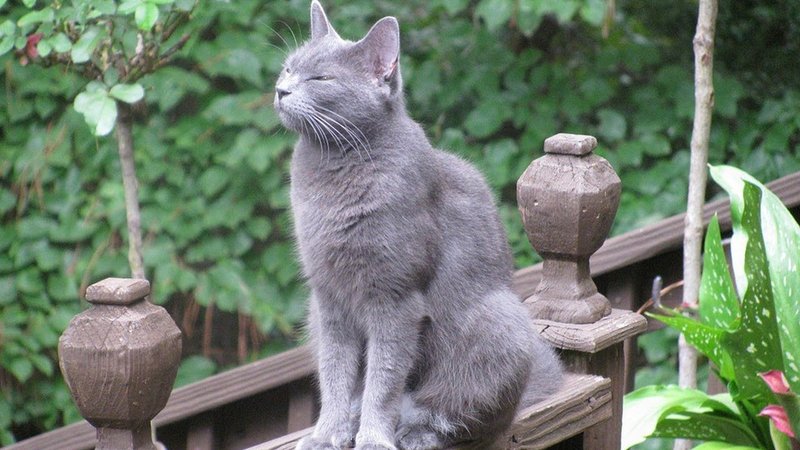
But, let’s get real—whether you’re already a proud Russian Blue parent or just exploring, understanding how to groom, feed, and create the right environment for your feline buddy is essential. So, grab a cup of coffee, and let’s dive into the world of Russian Blue cat care together!
Grooming Your Russian Blue Cat
The grooming needs of a Russian Blue cat might surprise you. Unlike some breeds that shed fur continuously, these cats have a unique double coat that helps keep their fur lush and healthy. Regular grooming is important, but it doesn’t have to be a chore. Here’s how you can make it enjoyable for both you and your cat.
Why Grooming Matters
Grooming isn’t just about keeping your Russian Blue looking fabulous; it’s also a great way to bond with your pet. Regular brushings can keep their coat free of mats and tangles. Plus, it helps reduce shedding around your home—win-win!
How Often Should You Groom?
Aim to brush your cat at least once a week. During shedding season (spring and fall), you might want to step it up to two or three times a week. This will help remove loose hairs and keep your Russian Blue’s coat looking sleek and shiny.
Choosing the Right Tools
You’ll need a few grooming tools to get started. A gentle slicker brush is perfect for getting rid of loose fur. A comb can help with any knots, especially since their coat can get a little dense. Don’t forget to check and clean their ears and trim their nails regularly, too. Keep treats on hand during grooming sessions to make it a positive experience for your cat!
Feeding Your Russian Blue Cat
Just like people, cats have specific dietary needs, and feeding your Russian Blue the right food is crucial for their health. You want to think of cat food as the fuel that powers their little engines. A balanced diet will ensure they have the energy to play and stay active.
What Should You Feed Them?
Look for high-quality cat food that lists meat as the first ingredient. Russian Blues tend to be more prone to obesity, so finding a balanced diet that meets their nutritional needs without empty calories is important. You might want to consider a mix of wet and dry food to keep things interesting. Wet food can help with hydration, while dry food can help with dental health.
How Much Should You Feed?
The amount of food will depend on your Russian Blue’s age, weight, and activity level. Generally, adult cats need about 200-300 calories a day. To give you a clearer picture:
| Age | Daily Caloric Intake |
| Kitten (up to 6 months) | 250-300 calories |
| Adult (1-7 years) | 200-300 calories |
| Senior (7+ years) | 150-200 calories |
Consult Your Vet
If you’re ever in doubt, don’t hesitate to reach out to your veterinarian. They can offer personalized recommendations based on your cat’s specific health needs.
Creating a Comfortable Environment
Your Russian Blue’s home environment is incredibly important. Think of it as their personal fortress—somewhere they can feel safe, entertained, and loved. Let’s break down the essentials of creating a cozy home.
Space to Roam
Cats love to explore, so it’s essential to give your Russian Blue space to move. They thrive in environments where they can climb, perch, and observe their surroundings. Consider investing in cat trees or shelves to give them a place to watch over their kingdom.
Safe Spaces
Every cat needs a quiet, safe spot where they can retreat when they feel overwhelmed. This could be a plush cat bed placed in a quiet corner or even a cozy box. Make sure their area is away from loud noises and where they can feel secure.
Toys and Stimulation
Keeping your Russian Blue mentally stimulated is important. These cats are quite intelligent, so they need playtime to keep boredom at bay. Interactive toys, feather wands, and puzzle feeders are fantastic for engaging their minds. Schedule daily play sessions; it’ll help strengthen your bond and keep them fit!
Health Care Essentials
Keeping your Russian Blue healthy involves more than just good food and grooming. Regular veterinary care is a must. Just like you wouldn’t skip your own doctor’s appointments, your cat needs their routine check-ups too.
Regular Vet Visits
Aim to take your Russian Blue to the vet at least once a year for a check-up. This helps catch any potential health issues early. Your vet can also give you advice on vaccinations, spaying or neutering, and flea control—all crucial for your cat’s well-being.
Recognizing Health Issues
Keep an eye out for signs that your cat might be unwell. Changes in appetite, unusual behavior, or weight fluctuations can signal that something’s off. It’s always better to be safe than sorry, so consult your vet if you notice anything unusual.
Understanding Their Temperament
Russian Blues are known for their gentle and affectionate nature. They can be somewhat shy but are loyal companions who often form strong bonds with their human families. Understanding their temperament can help you interact successfully with your new friend.
Socialization
Start socializing your kitten early, but also be patient with adult cats that might need more time to adjust. They tend to appreciate a calm environment, so loud noises or chaotic settings can stress them out.
Playful Yet Independent
While they enjoy playtime, Russian Blues also value their independence. You’ll find they might curl up on their own after a play session. It’s perfectly normal! Just respect their space and let them come to you when they’re ready.
Tips for a Happy, Healthy Russian Blue
Lastly, here are some key takeaways that will help you ensure a happy and healthy life for your Russian Blue.
- Stay Consistent: Whether it’s feeding, grooming, or playtime, consistency is key in helping your cat feel secure.
- Keep Things Clean: Regularly clean their litter box and living area to promote good hygiene and comfort.
- Be Patient: Understand that each cat is unique, and adjusting to a new home takes time.
- Show Love: Always shower your Russian Blue with love and attention to build a strong bond.
Caring for a Russian Blue cat can be incredibly rewarding. With the right grooming, feeding, and environment, you’ll create a loving home where your cat can flourish. Remember, it’s all about patience and understanding. Enjoy the journey with your new furry friend!

